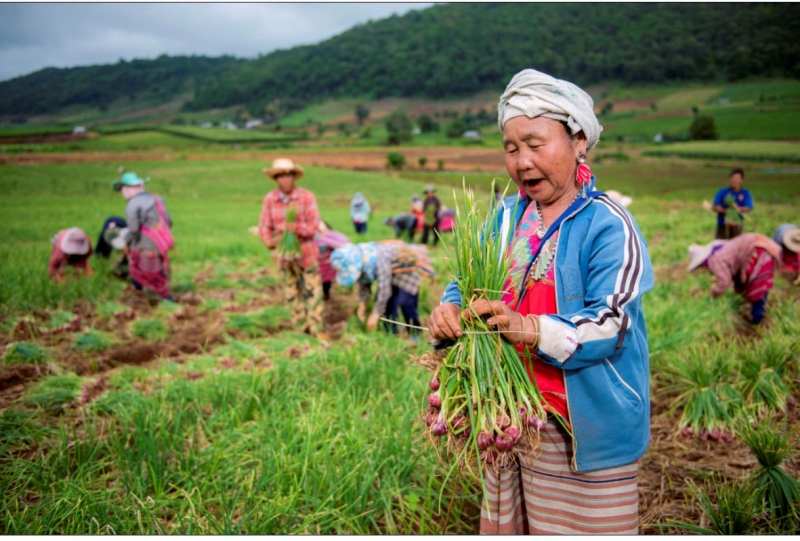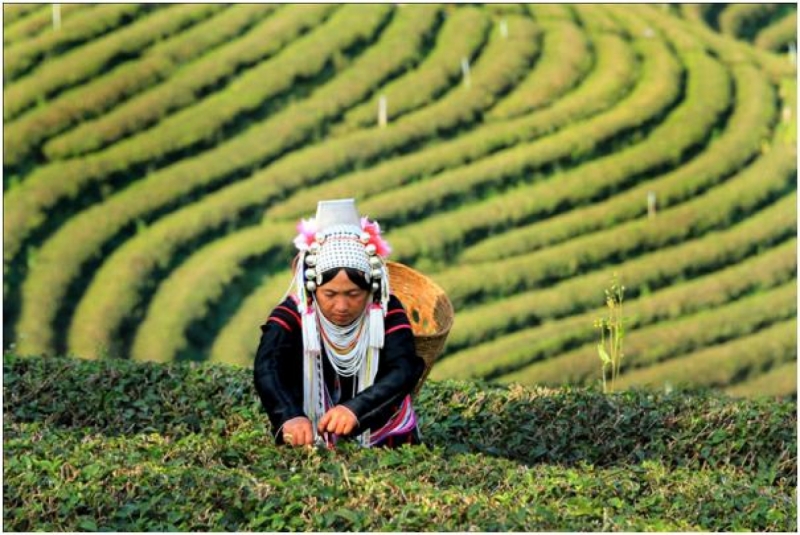




Take a government worker and a farmer, for example. Its physical repercussions are quite obvious – a farmer had to go out to the field and till her land under the scorching heat, all burnt and sweaty, while the government official is seated comfortably in his office, which is fully air-conditioned.
The government official goes to work, does his usual job, and earns the same salary (maybe even more) each day. The heat outside, while extremely troubling, does not interfere directly with his job. Meanwhile, the farmer’s crops are dying due to drought, rendering her income-less.
A government official meets with more high-level officials and discusses current issues plaguing the society, such as climate change. His voice and opinions mean something. On the other hand, the farmer goes home to her children empty-handed – what with her crops all dead – her story never heard.
Add all these up and we have someone who has access to a plethora of opportunities and services needed to get through a dry season (or a heavy rainfall) unscathed, and someone who has basically nothing to carry on with, not even a voice to be heeded.
The same inequality in experiences in climate change exists between genders. And it would not be too hard to guess which one gets the uglier end of the deal.
Climate Change, Women, and Inequality
Our women carries the heavier burden of the detrimental effects brought about by climate change.
“These effects can be felt in the short-term through natural hazards, such as landslides, floods and hurricanes; and in the long-term, through more gradual degradation of the environment. The adverse effects of these events are already felt in many areas, including agriculture and food security; biodiversity and ecosystems; water resources; human health; human settlements and migration patterns; and energy, transport and industry.” This is according to a 2009 United Nations (UN) Women report.
In majority of these contexts, women are more vulnerable to the effects of climate change than men—essentially because they constitute the bulk of the world’s poor (70 per cent of the world’s poor are women, according to United Nations Framework Convention on Climate Change or UNFCCC) and are more dependent for their livelihood on natural resources that are threatened by climate change. Add to these the social, economic and political barriers that limit their coping capacity, and we have a clear picture of gender inequality operating.
Making most women and men in rural areas in developing countries more vulnerable is their high dependence on local natural resources for their livelihood. Furthermore, those whose task is to secure water, food, and fuel for cooking and heating – which are basically almost always women – struggles the most.
“When coupled with unequal access to resources and to decision-making processes, limited mobility places women in rural areas in a position where they are disproportionately affected by climate change,” added the UN Women report.
Women in the Face of Disasters
Most evidently in developing countries, a host of disadvantaging social structures often places women at higher risks of harm (and even death) from climate change. For instance, since women are commonly responsible for taking care of children and the elderly, they are often the last to leave when a disaster strikes. In fact, a 2007 study from the London School of Economics found that natural disasters — foreseen to grow worse as the world heats up — are more likely to kill women than men, and that this disparity is “largest where women's socioeconomic status is lowest.”
"Because of these existing gender inequalities that are perpetuated by customs, social practices, and even economic structures, women are more vulnerable," Verona Collantes, climate change specialist with UN Women, told VICE News in an article by Laura Dattaro. "So there is a differentiated impact."
Women likewise carry a greater responsibility for tasks that may become more difficult in a warmer planet. For example, in 63 percent of households in rural sub-Saharan Africa, women must collect and carry the family's water, according to a 2010 UN report. In only 11 percent of households does this job fall to men.
Climate change, deforestation, and desertification are leading to waning water supplies, the report found, which means women, and in some cases young girls, might need to spend more time finding water — time that could have been spent on education, livelihood, or other more important matters.
From Victims to Heroes

It can be gleaned that the extent to which people are affected by climate change impacts is a combined function of their social status, gender, poverty, power and access to and control over resources. As stated in a United Nations Development Programme (UNDP) policy brief in 2013, “despite the international community’s increasing acknowledgement of the differential experiences and skills women and men bring to development and environmental sustainability efforts, women still have lesser economic, political and legal clout and are hence less able to cope with—and are more exposed to—the adverse effects of the changing climate.”
Learning from women’s experiences, knowledge, and skills, and pushing forward their empowerment can help build more effective climate change responses. However, the impacts of gender disparity and women’s socio-economic drawbacks are persistently being ignored, making it a recurrent critical challenge to adaptation plans and efforts.
This further emphasizes the importance of integrating gender issues at all levels in various mitigation and adaptation efforts. Realizing this can help minimize risks to women and children, as well as guarantee more substantial success in addressing climate change.
It is important to keep in mind that women are not only vulnerable to climate change, but are also effective actors or agents of change in relation to both mitigation and adaptation. According to a 2015 report by the Georgetown Institute for Women, Peace and Security (GIWPS), women often have a vigorous body of knowledge and expertise that can be used in climate change mitigation, disaster reduction and adaptation strategies. In addition, the roles of women in households and communities, as homemakers and stewards of natural and household resources, renders them as significant contributors to livelihood strategies adapted to our changing environmental landscape.
This goes to show that women are not victims; they can be heroes of climate change. And while it is true that the impacts of the changing climate are currently not the same for everyone, the opportunity to change this reality is equal for all genders.
The temperature is rising, and the climate is changing. Along with this, may we all rise up for equal rights, access to services and opportunities, and fair representation of our women, and change the system of inequality that continually plagues the ever-warming world that we live in.